Pierre Gonalons brings extra shine to an icon with the Renault 5 Diamant
Proving that the Renault 5 is in the pink at 50, Renault and French designer Pierre Gonalons have created a flamboyant one-off version of the 1970s original
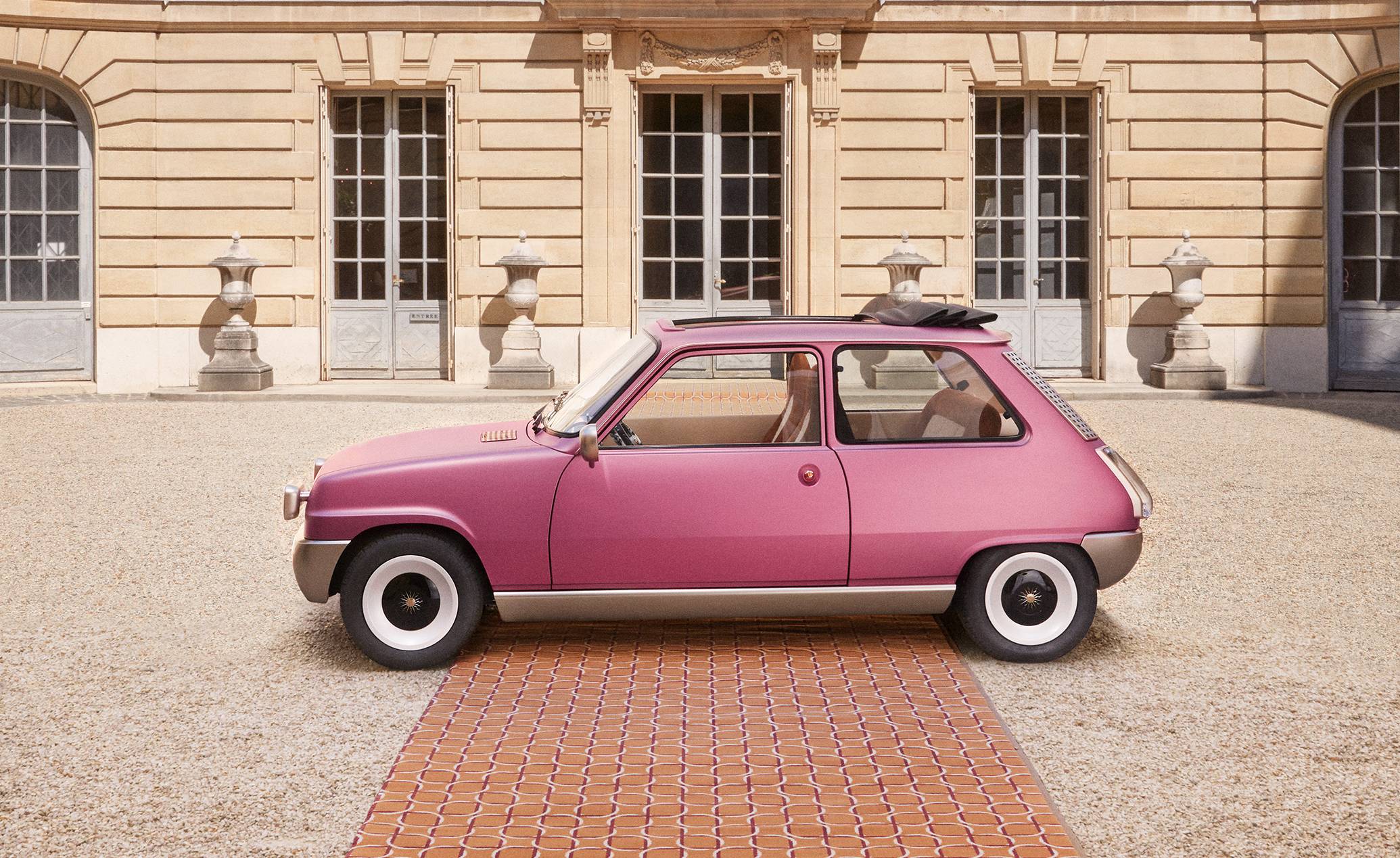
Gaëlle le Boulicaut- Photography
This spectacular show car has been created in collaboration between the French designer Pierre Gonalons and Renault’s design team. The Renault 5 launched in 1972, an ultra-compact hatchback that evolved the style of the popular Renault 4 with a cleaner, crisper aesthetic. Designed by Michel Boué, ‘Le Cinq’ was hugely popular, quickly becoming France’s best-selling car.
Over two generations and 24 years, some 5.5 million cars were sold, ensuring it has a place as an enduring piece of classic mass-market design.
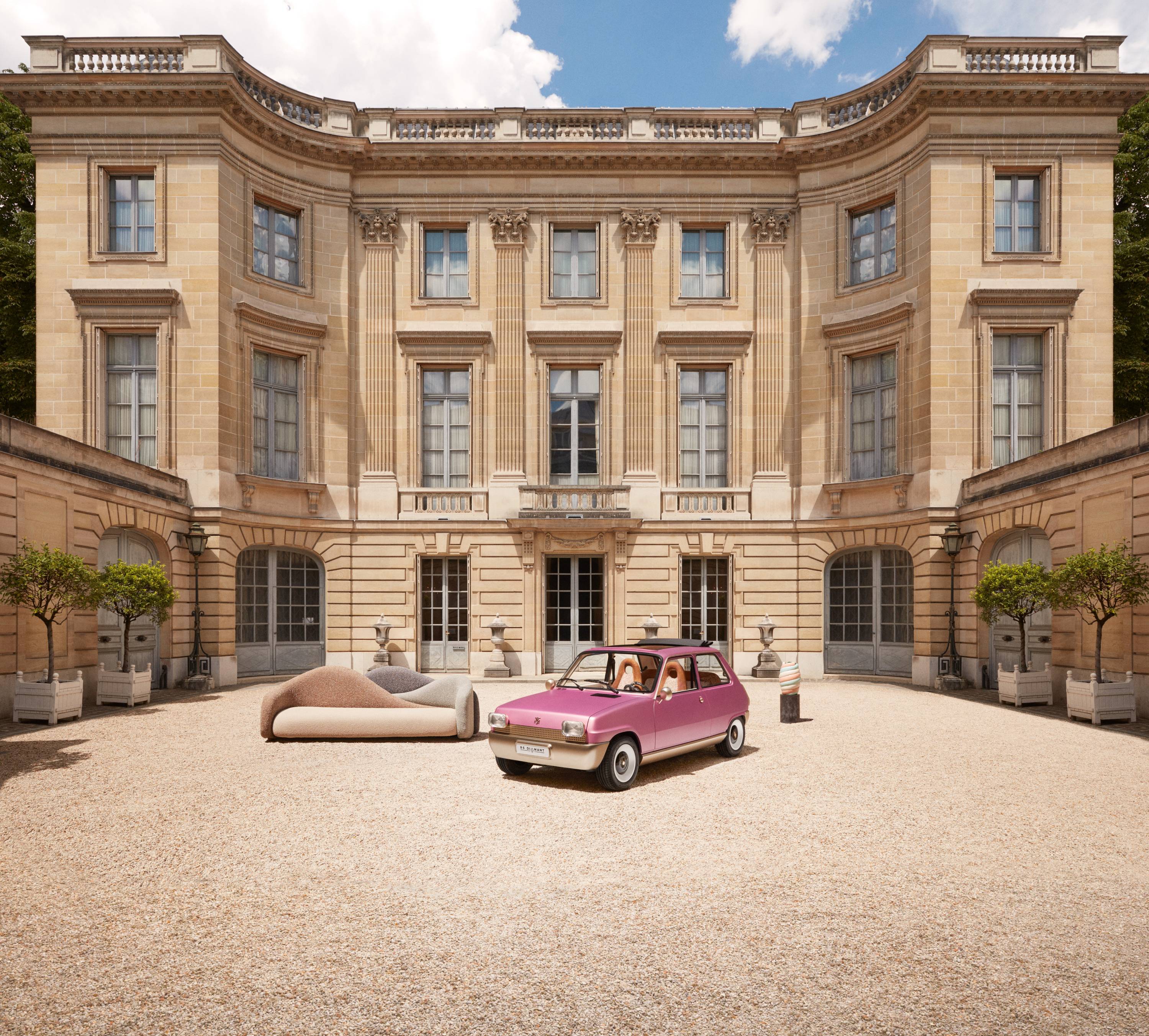
The Renault 5 Diamant by Pierre Gonalons, alongside the designer’s ‘San Primo’ sofa
To mark the 50th anniversary of the Renault 5 – and also to help prepare the ground for a new, all-electric 5 model in the next couple of years – Renault has teamed up with the French designer Pierre Gonalons to create a unique one-off version of the original car.
Starting with a 1970s-era Renault 5, the designer worked alongside Renault Design’s Colours & Trims team to completely overhaul the style and stance of Boué’s inspirational shape.
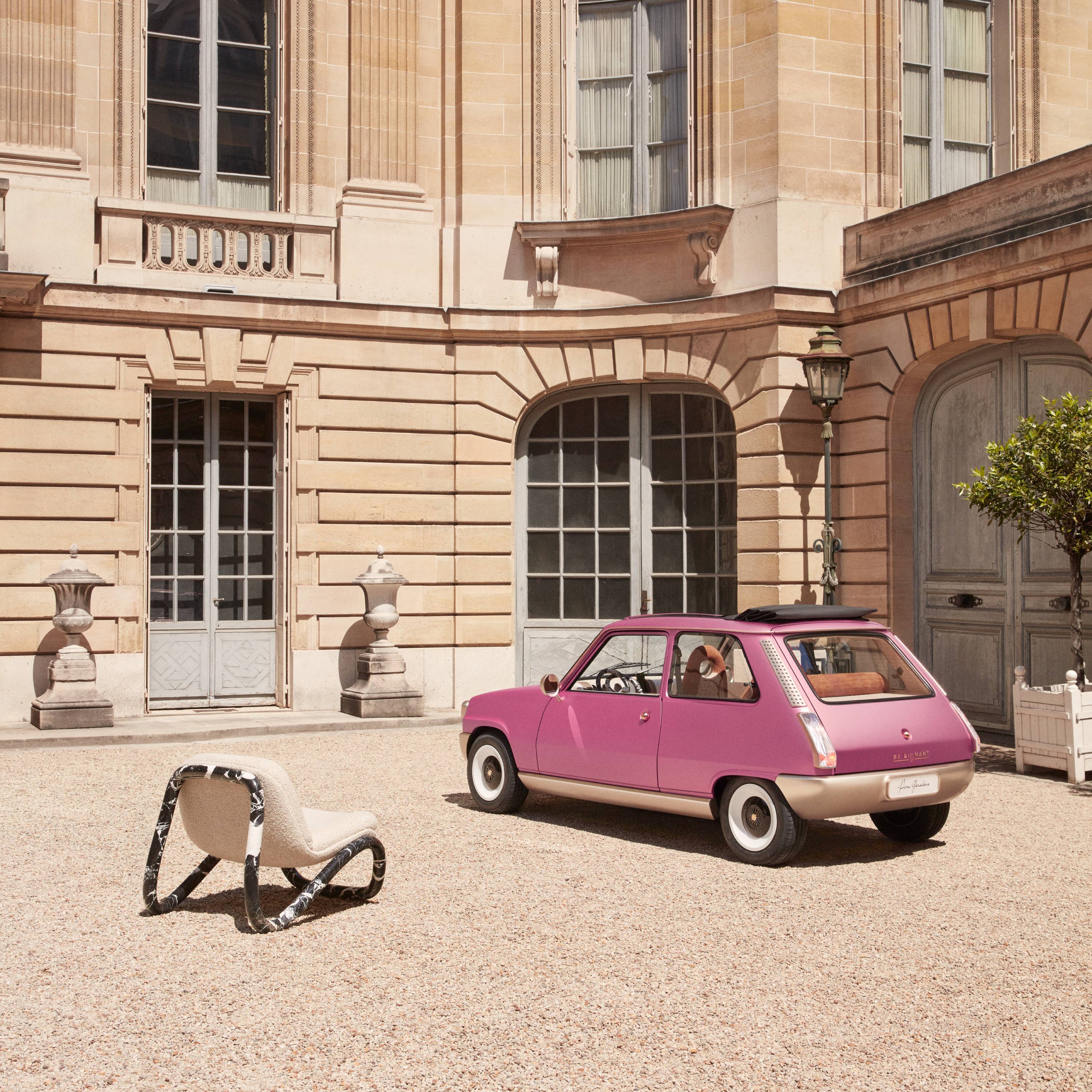
Renault 5 Diamant by Pierre Gonalons, with the ‘Loggia’ armchair
‘It was about celebrating this timeless design,’ says Gonalons. ‘The Renault 5 was a revolution in form when it was launched. It’s a very beautiful design object, with very lean lines.
‘It was never about status, but about symbolising the freedom of the era. I thought it was important to keep this spirit.’
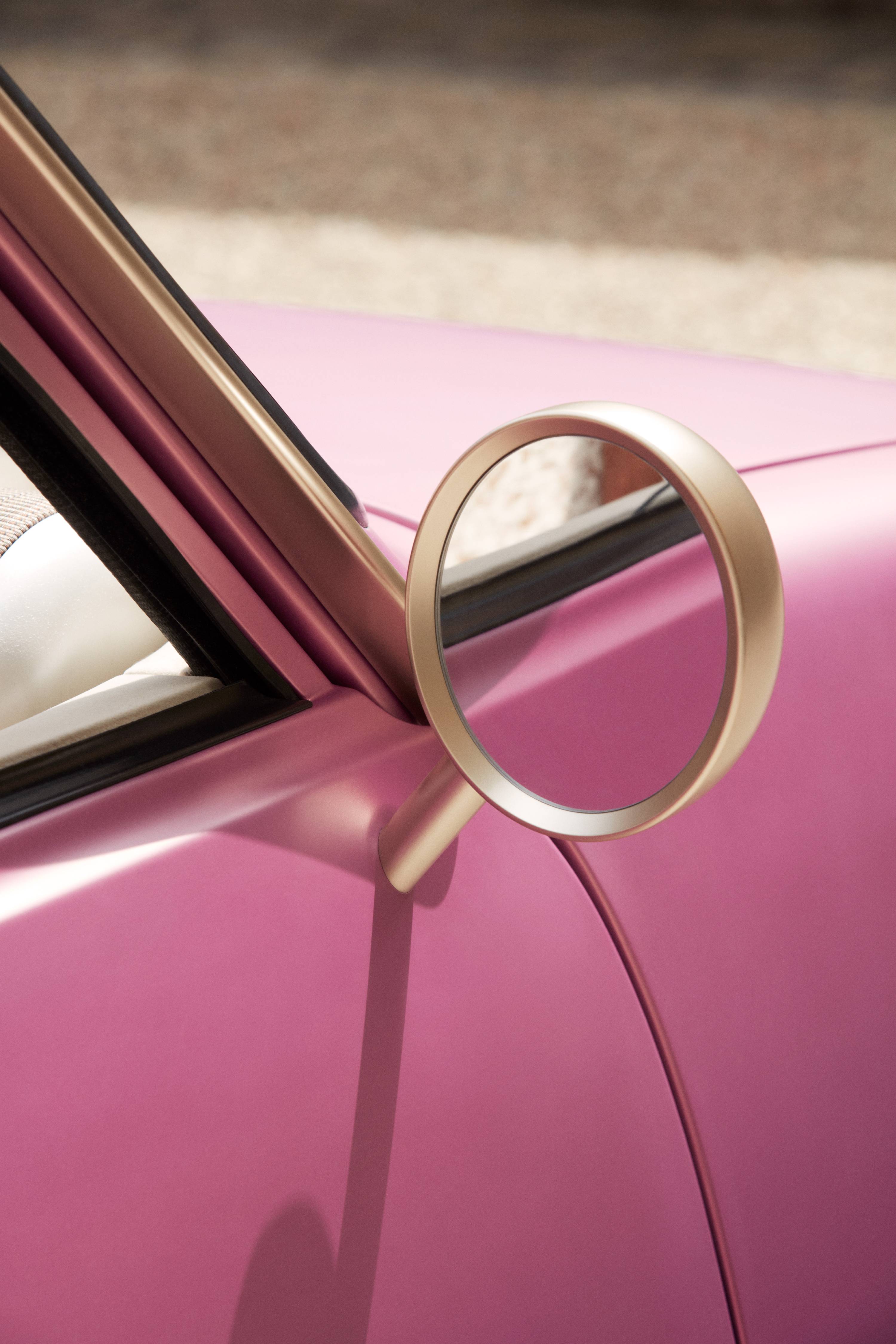
Resplendent in a matt pink finish with gold accents, the Renault 5 Diamant draws on Gonalons’ expansive knowledge and love for the decorative arts. As the name suggests, fine jewellery is one of the biggest sources of visual inspiration. While the silhouette is identical to the 1970s original, the detail design is noticeably different, with key elements such as the mirrors, lights, instruments, and steering wheel transformed using entirely different – and unexpected – materials.
Wallpaper* Newsletter
Receive our daily digest of inspiration, escapism and design stories from around the world direct to your inbox.
Under the bonnet things are also new, with the original modest engine replaced by an electric powertrain. Gonalons worked with François Farion, Renault Colour & Trim director, who describes the Diamant as an ‘emotional jolt’. ‘Pierre pays a lot of attention to detail,’ he adds. ‘He is extremely sensitive to the references and meaning in each element.’
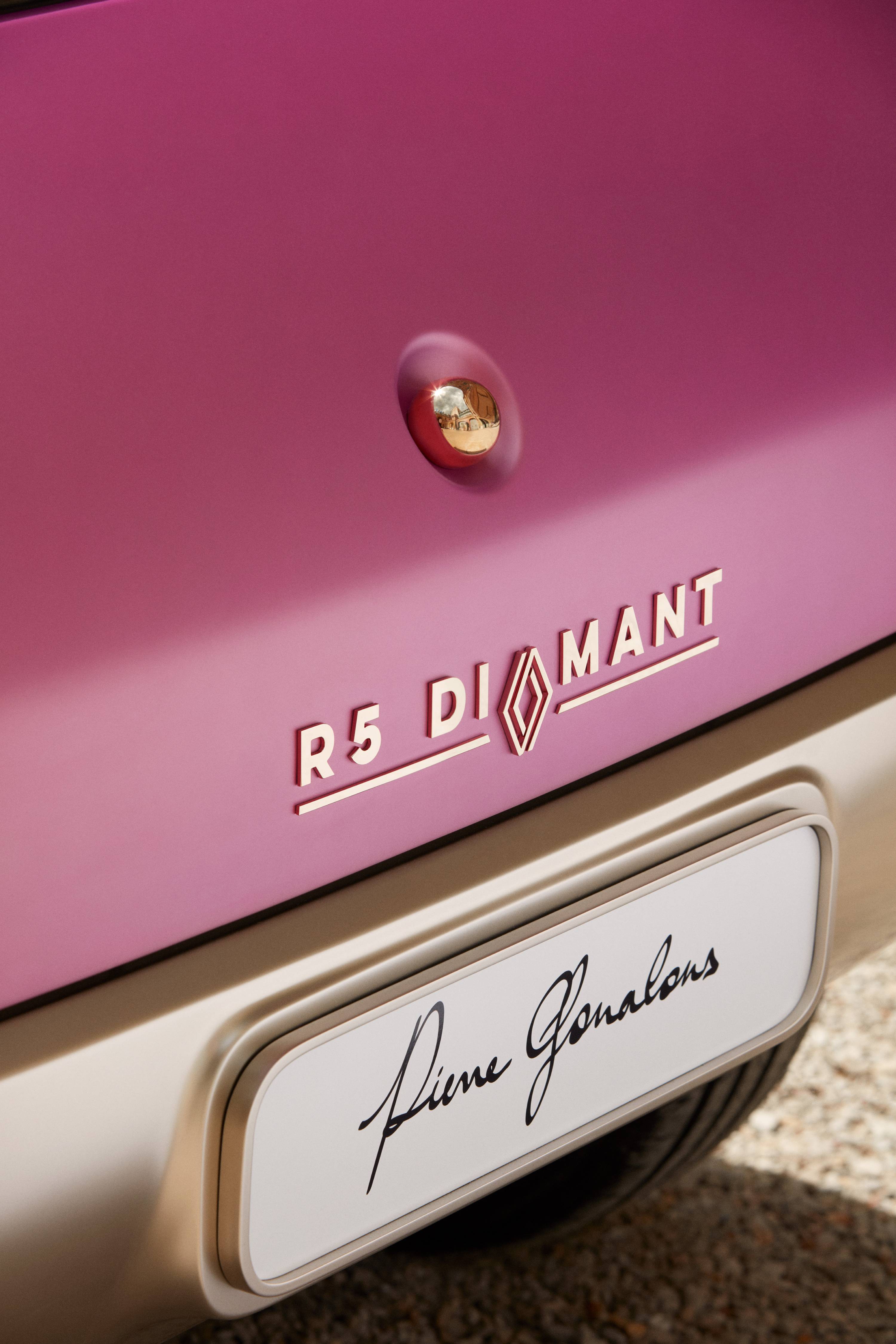
‘The very first editions of the Renault 5 came in orange,’ says Gonalons. ‘This was new, suggestive, and even a forbidden colour for the age. In 2022, I think pink has the same connotations, certainly within the car industry.’
The Diamant’s bodywork has a meticulously crafted finish, created by combining three layers of paint, starting with golden pigments on a pink base and then covered with frosted varnish to create sparkling gold effects in sunlight and appear blue in the dark.
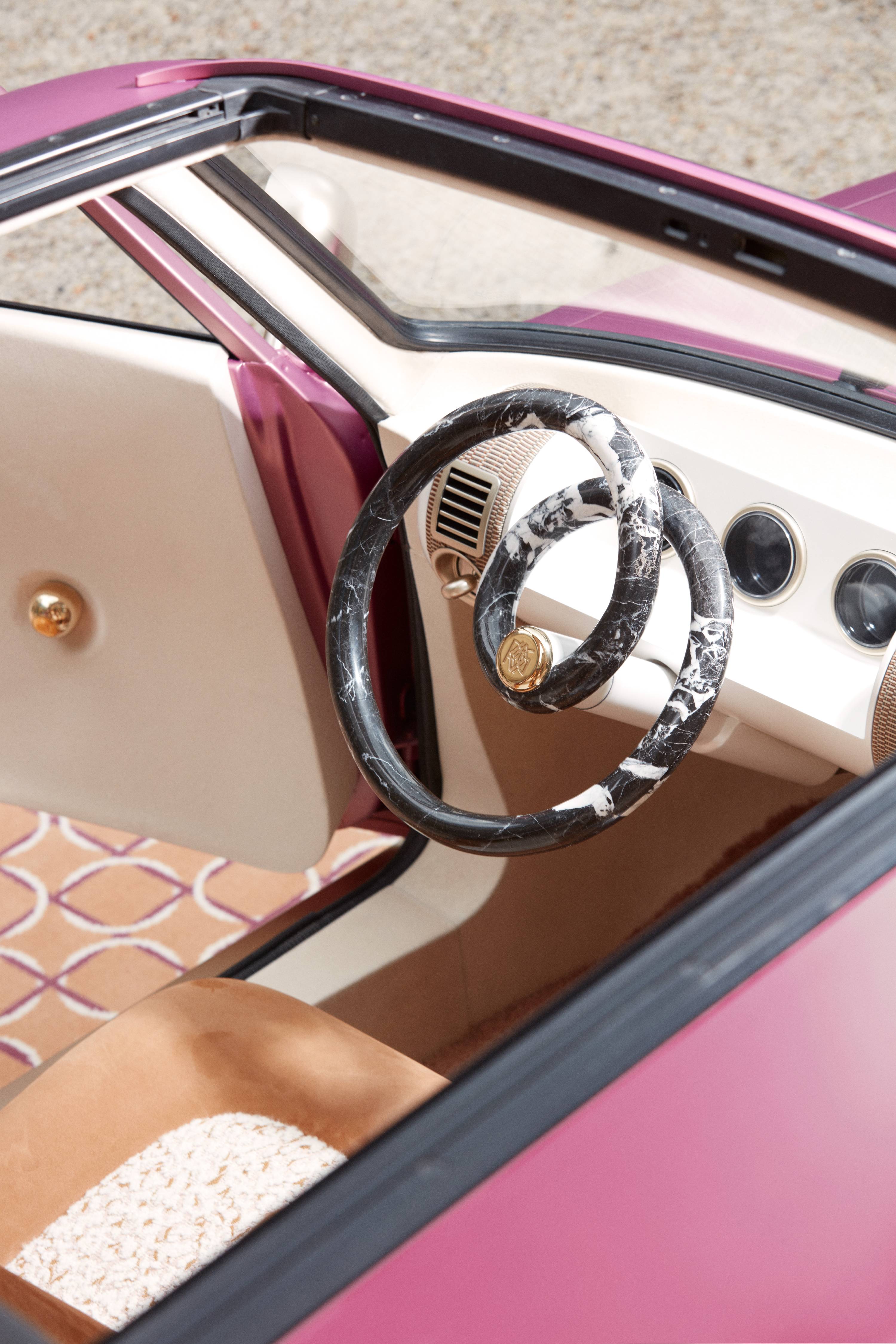
The pared-back approach continues through to the interior. Controls such as door handles and window winders are truncated brass spheres, gilded in pale gold, whilst the extraordinary steering wheel is marble on carbon. Not only does it reference Gonalons’ own ‘Loggia’ chair, but the designer says the twisting form evokes winding city streets or the diagram of a racetrack.
‘The wheel makes the biggest impact,’ he says, admitting that ‘marble is a very surrealist choice. But then it’s part of my design universe. I like things that are not what they seem.’
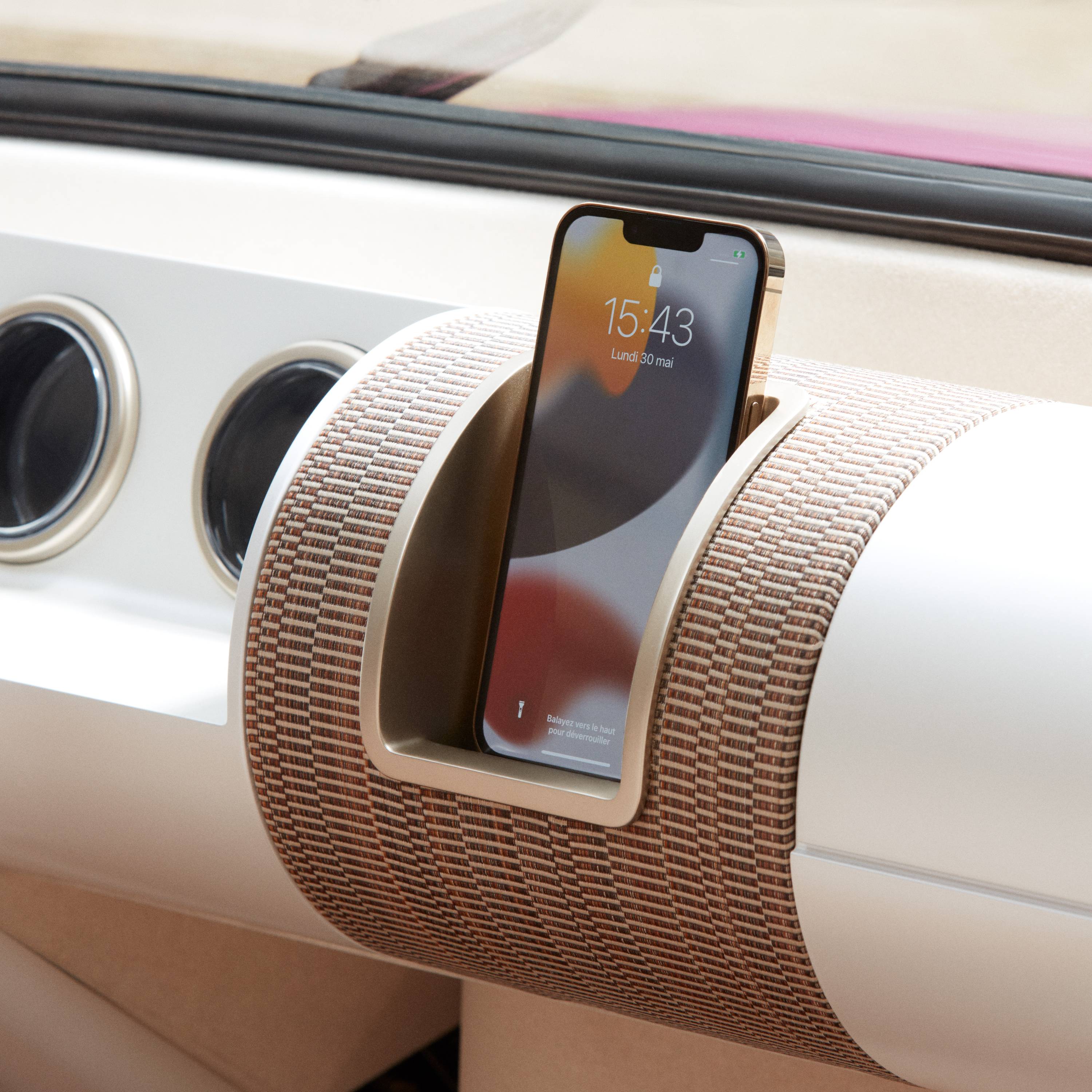
Gonalons teamed up with many experts and suppliers from his experience with building bespoke furniture. That wheel, together with the interior storage compartment, is fashioned from French Grand Antique d’Aubert marble, which was recycled by Mineral Expertise and then cast into tubes.
Textile manufacturer Métaphores created the fabric for the seats, while there are Pinton mohair wool carpets, and gilded details by Parisian atelier Bertin-Aubert, an artisanal specialist founded in 1936. The dashboard incorporates a phone dock to supplement the three minimalist dials (speed, battery charge, and time), surrounded by horsehair fabric hand-woven by Le Crin.
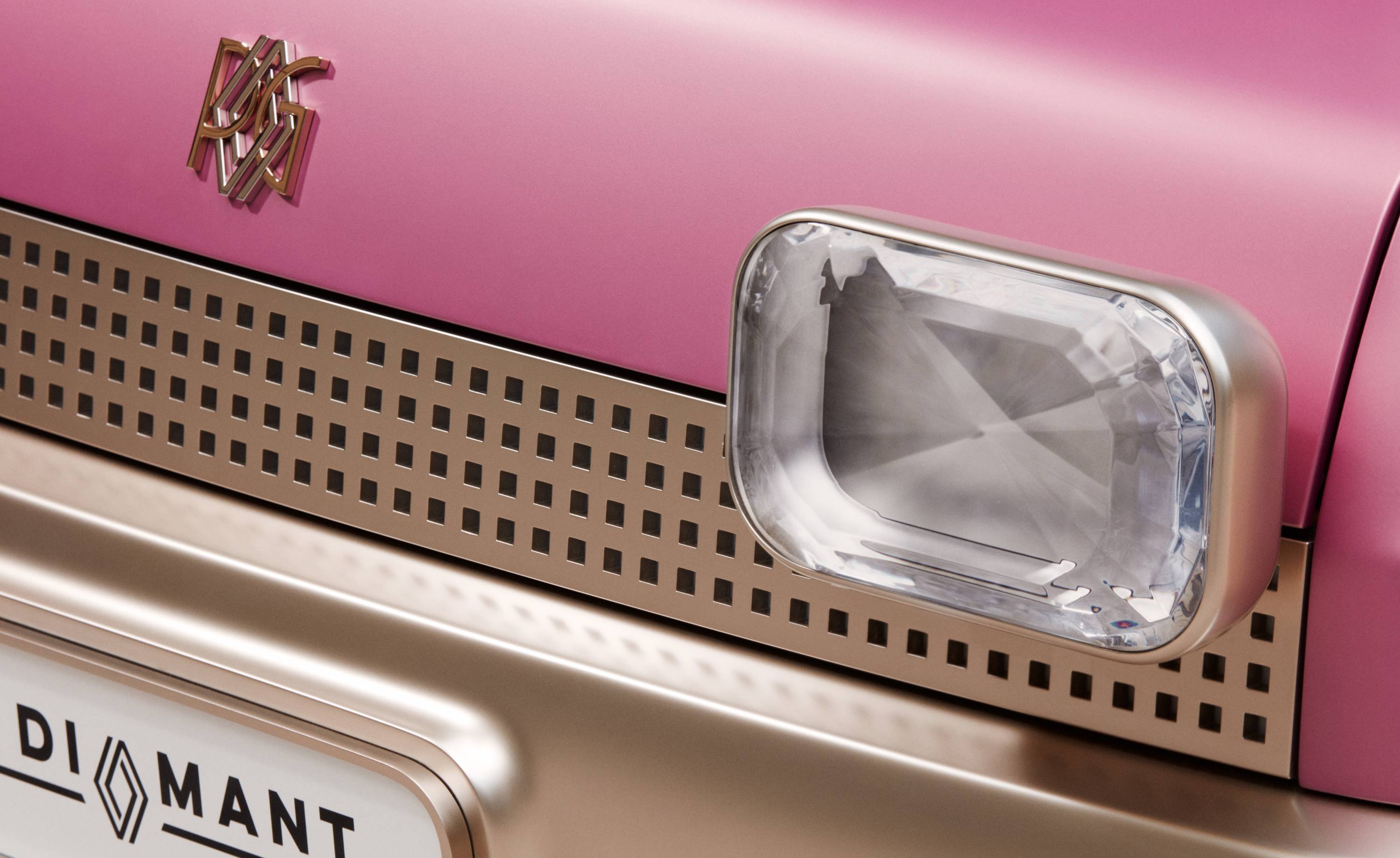
‘My approach is to be as serious about strict design as I am about fantasy,’ he admits. ‘They are both treated the same way. The Diamant is a balance between clean design and fantastical, almost surrealist, details.
‘For the handles, I was inspired by earrings. The jewel-style front lights, which stand proud of the bodywork and new gridded grille, are like emerald-cut diamonds in a clasp, but also reference spotlights on a rally car.’ The Renault 5 was an acclaimed racing car in its day.)
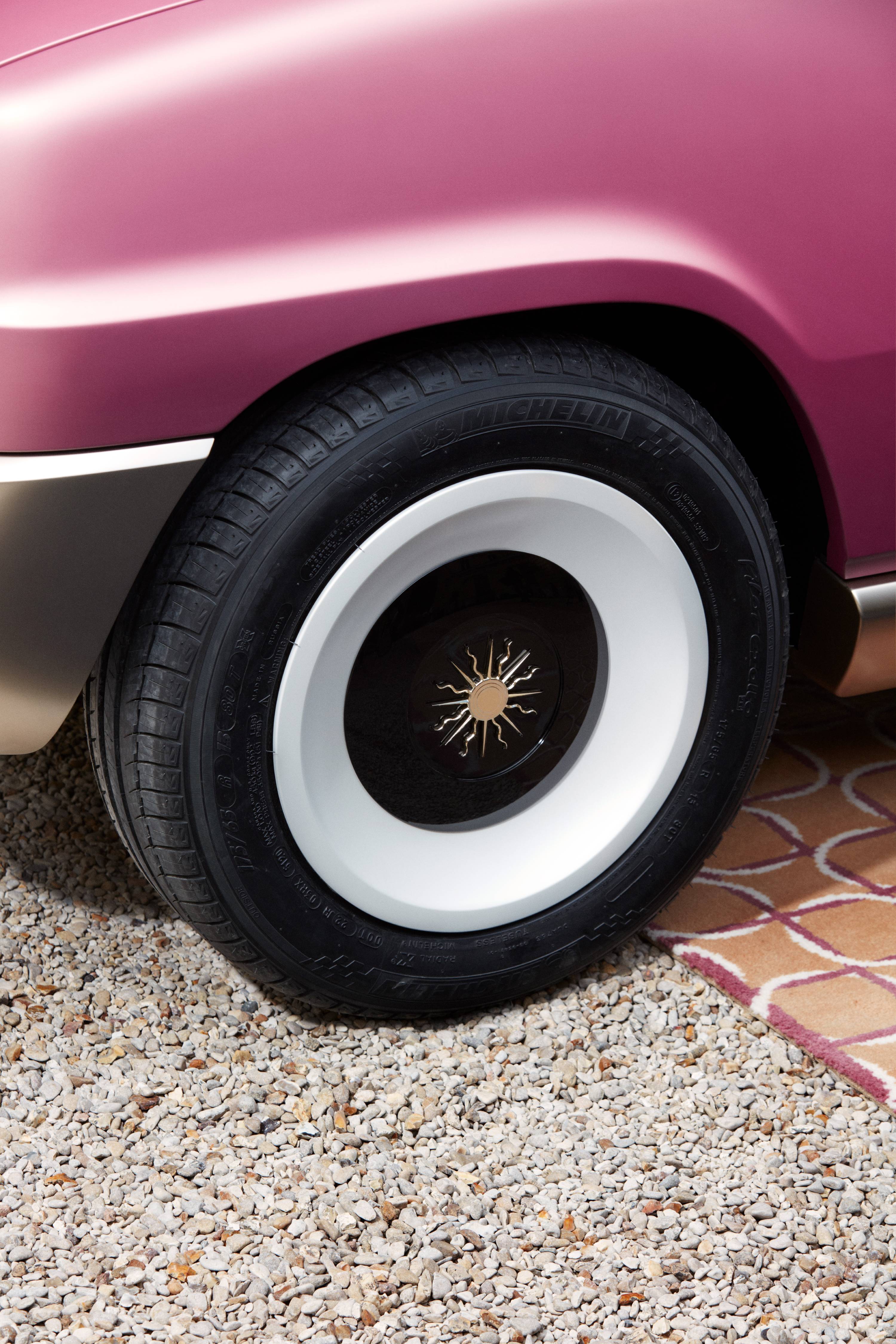
Other delightful details can be spotted in every corner. Renault’s famous logo has been a diamond since 1925 but was overhauled last year by Gilles Vidal, VP, Renault Brand, Design. The aptly named Diamant’s logo incorporates Pierre Gonalons’ initials into the geometric form, with gold letters intertwined into the silver.
On the wheel, the hubcaps are finished with a striking sun detail. This references the historic ironwork adorning the façades of Paris’ Place Vendôme, a hub of French luxury design culture. ‘It’s a symbol of luxury,’ says Gonalons, but it’s also a tribute to French decorative arts, from Louis XIV, to Elsa Schiaparelli, to Thierry Mugler.’
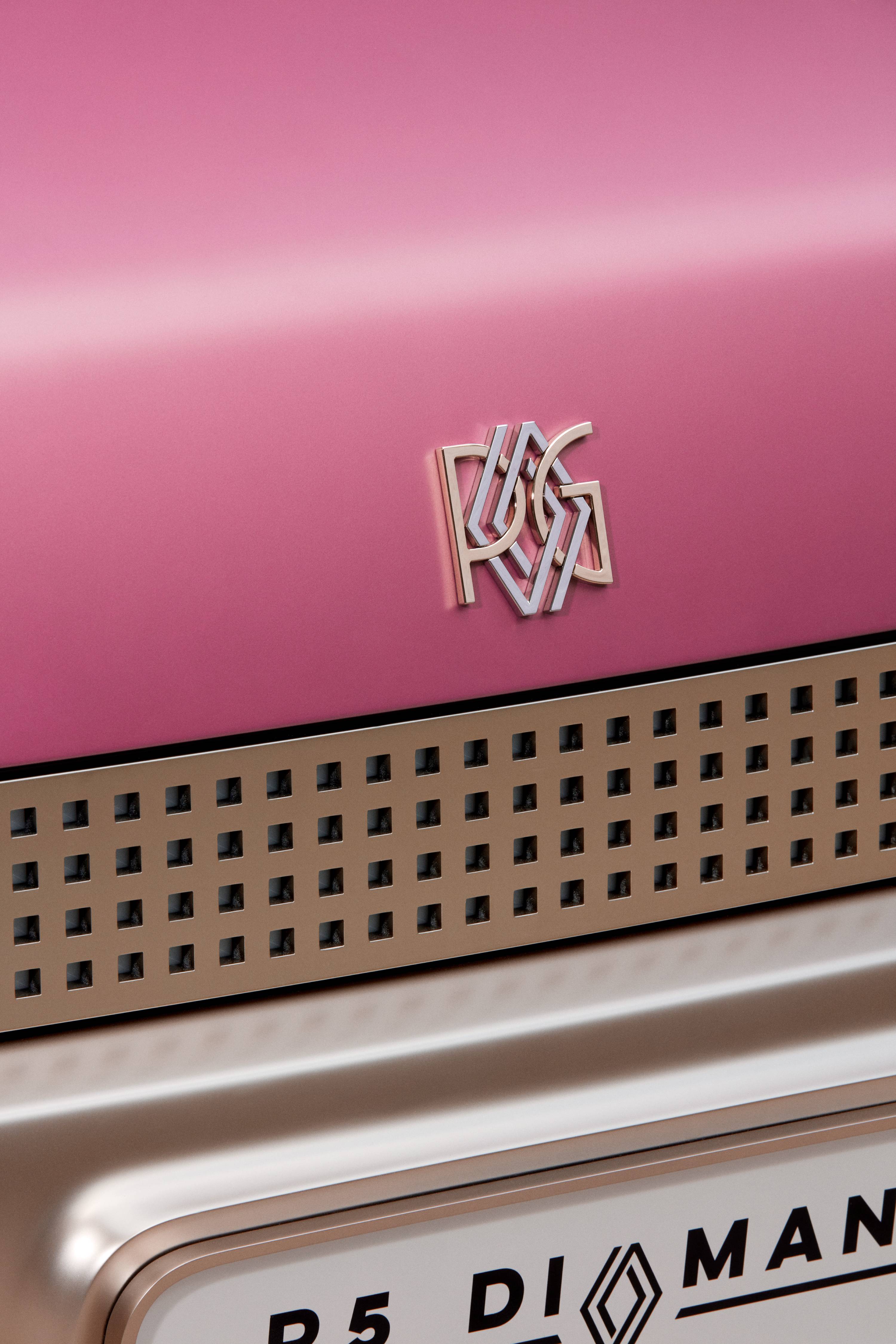
Gonalons set up his own studio at the age of just 23, since when he has specialised in elegant modern furniture and fittings, including pieces for Paris’ Maison Dentsu, high-end retail spaces, installations, and hospitality design. His next project for Renault will involve dipping a toe in the metaverse, producing virtual designs that will be sold.
The Renault 5 Diamant will remain a one-off, eventually being auctioned for Renault’s Give Me 5 CSR project. ‘The story will continue,’ Gonalons says. Renault is also in the midst of an overhaul. Fifty years after the original 5, a new model will soon break cover. Evoking the original’s sharp proportions, Renault hopes it will be the brand’s equivalent of the Fiat 500 and Mini Cooper.
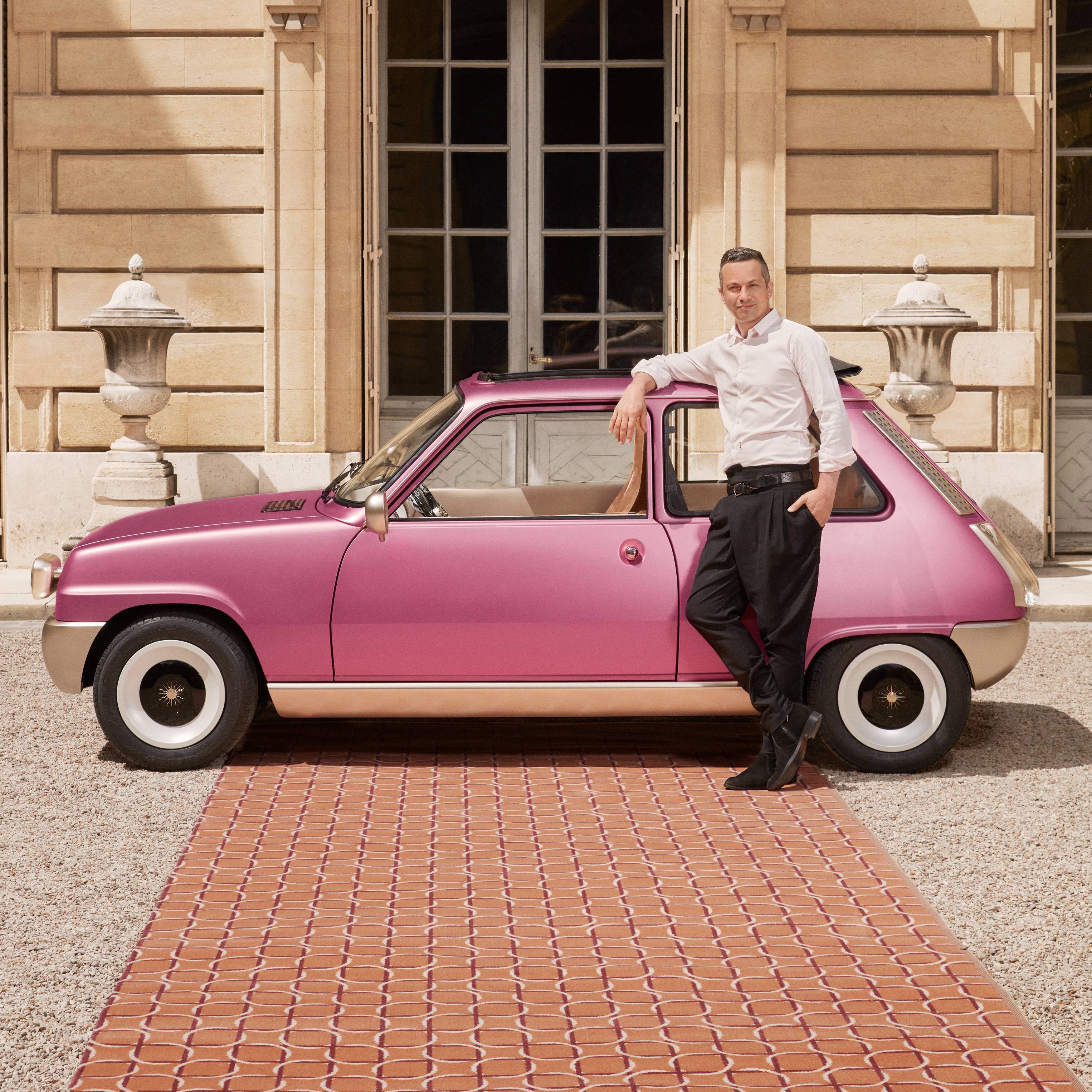
Pierre Gonalons with the Renault 5 Diamant
The Diamant follows Mathieu Lehanneur’s transformation of an original Renault 4 into a ‘mobile hotel room’, a conceptual project unveiled in October 2021.
Renault is unafraid to mix art, interiors, craft, and car design, adding lustrous finishes, meticulous details, and knowing nods to culture both old and new in its quest to once again become a defining symbol of French industry and innovation.
INFORMATION
pierregonalons.com
Jonathan Bell has written for Wallpaper* magazine since 1999, covering everything from architecture and transport design to books, tech and graphic design. He is now the magazine’s Transport and Technology Editor. Jonathan has written and edited 15 books, including Concept Car Design, 21st Century House, and The New Modern House. He is also the host of Wallpaper’s first podcast.
-
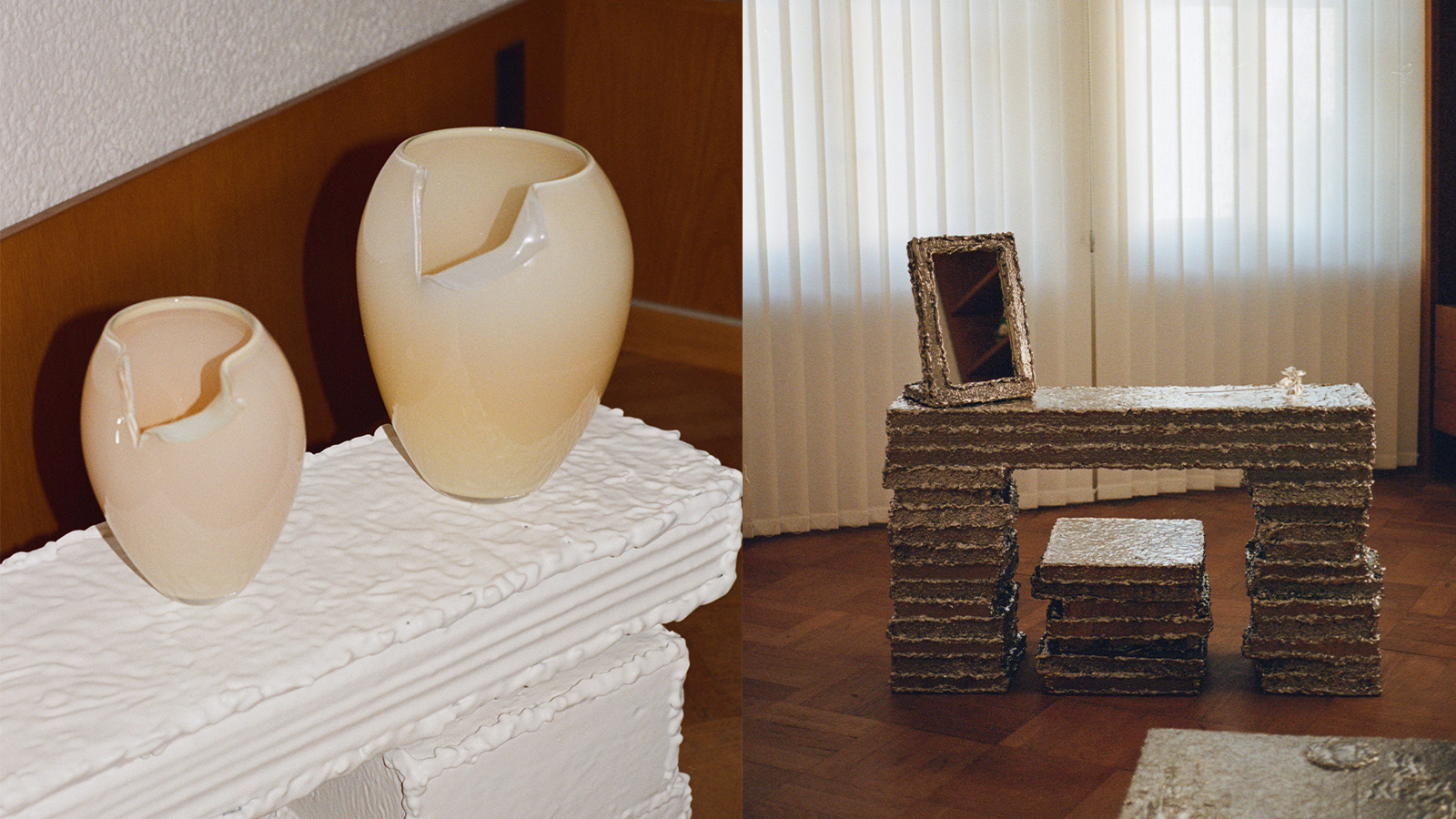 The jewellery designers turning their hand to homeware
The jewellery designers turning their hand to homewareThree jewellery designers apply their delicate eye for detail to homeware and furniture design, creating elegant pieces that stay true to their individuality
-
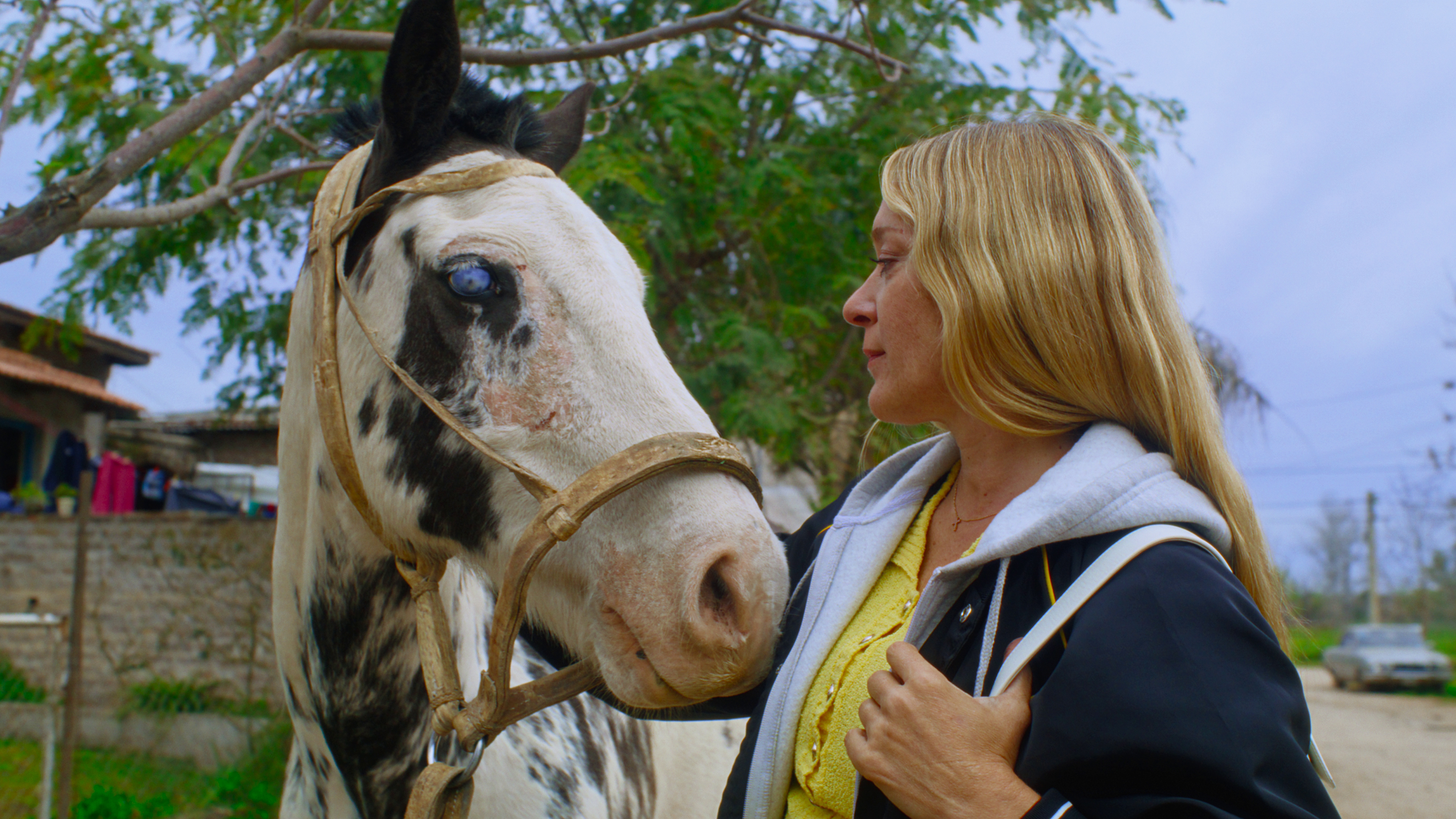 In film, Magic Farm, Amalia Ulman's characters are on the hunt for 'crazy subcultures'
In film, Magic Farm, Amalia Ulman's characters are on the hunt for 'crazy subcultures'Director Amalia Ulman explores hipster territory and internet culture in Magic Farm, starring Chloë Sevigny, Alex Wolff and Joe Apollonio. We meet her ahead of its release
-
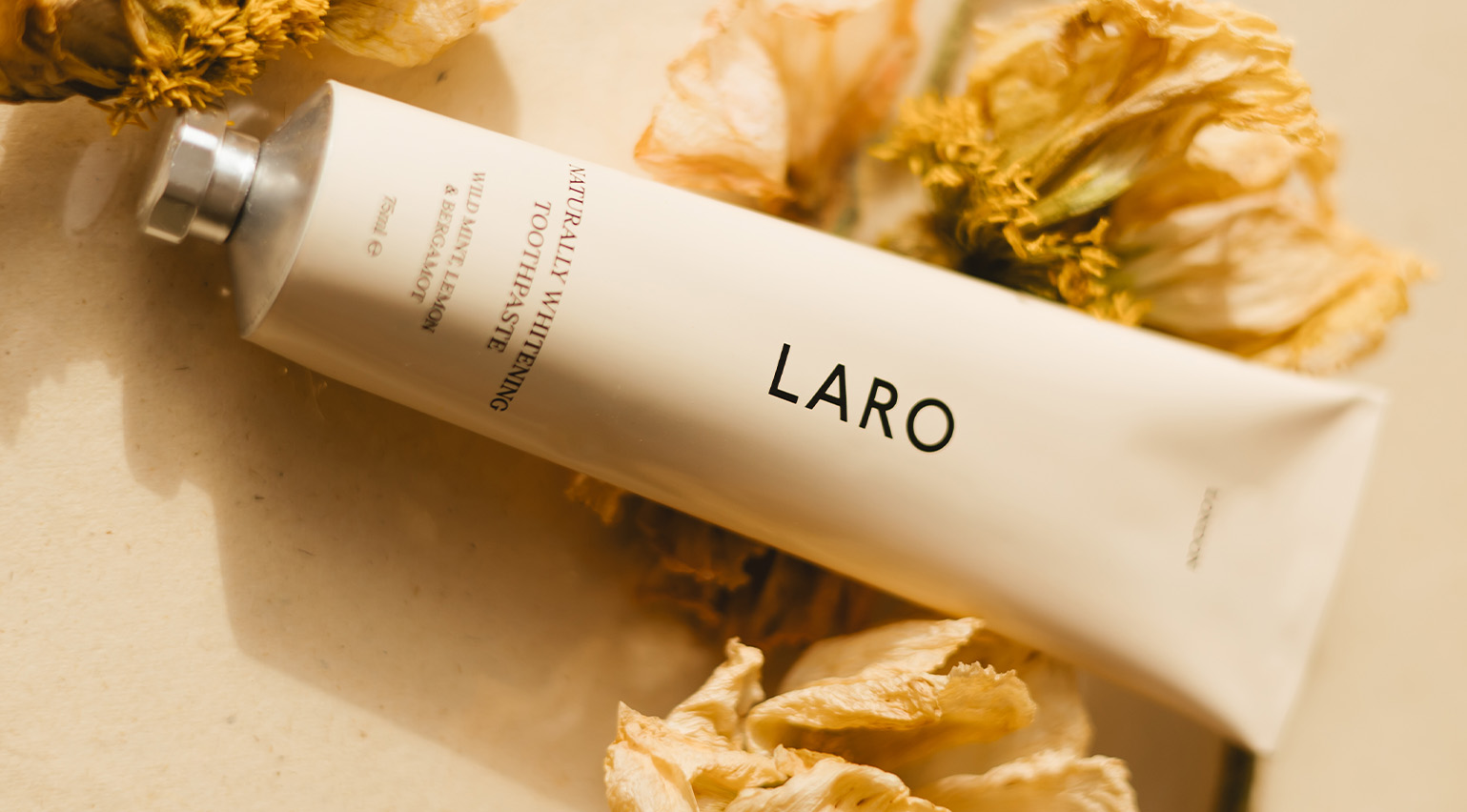 Laro London’s non-toxic toothpaste is a ‘spring clean’ for your mouth
Laro London’s non-toxic toothpaste is a ‘spring clean’ for your mouthLaro London is a new oral care brand championing non-toxic ingredients and conscious design. India Birgitta Jarvis sits down with its founder for Wallpaper*
-
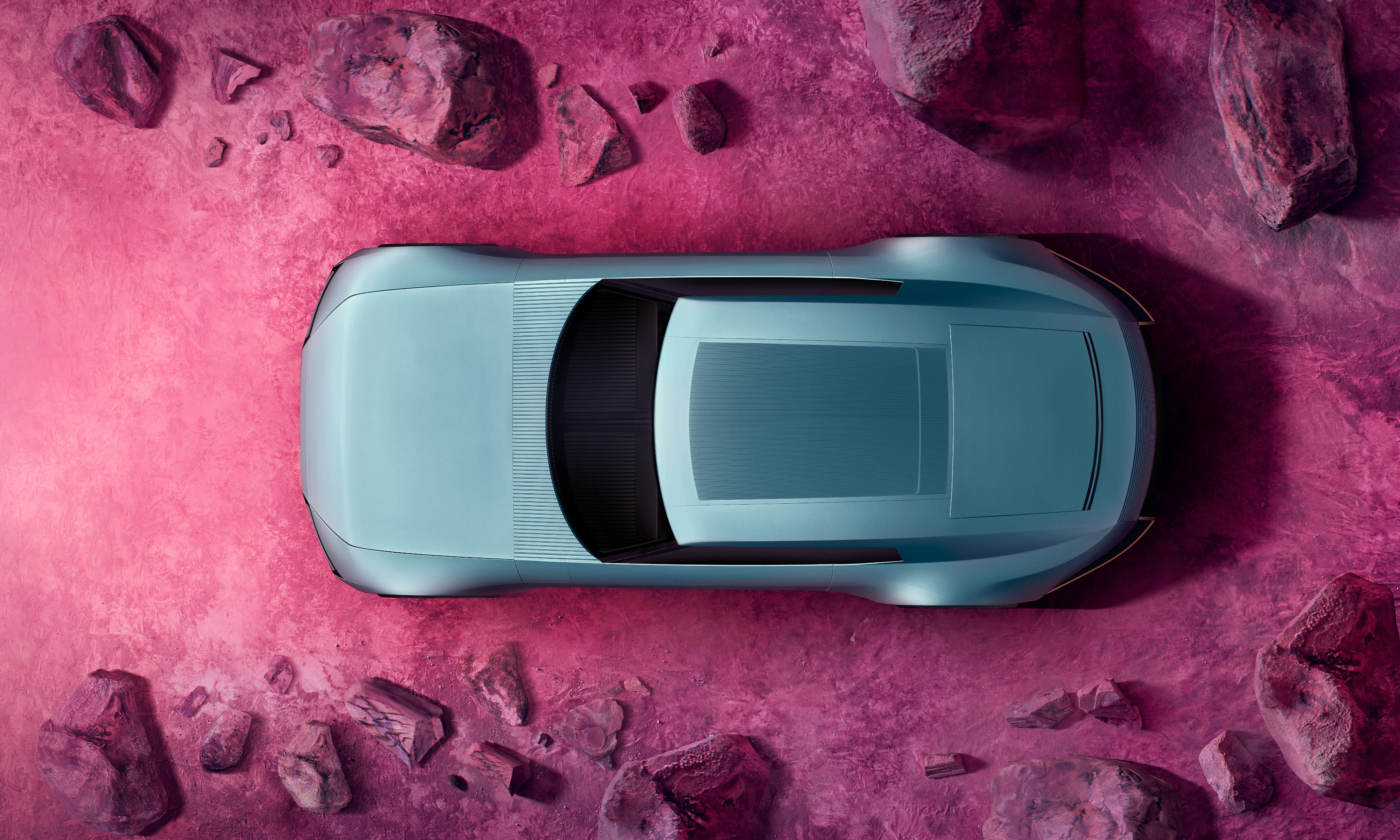 The top 10 concept cars of 2024, as selected by Wallpaper’s Transport Editor
The top 10 concept cars of 2024, as selected by Wallpaper’s Transport EditorWe round up our favourite forays into futuristic design with this collection of concepts and design studies showcasing the transport of tomorrow
-
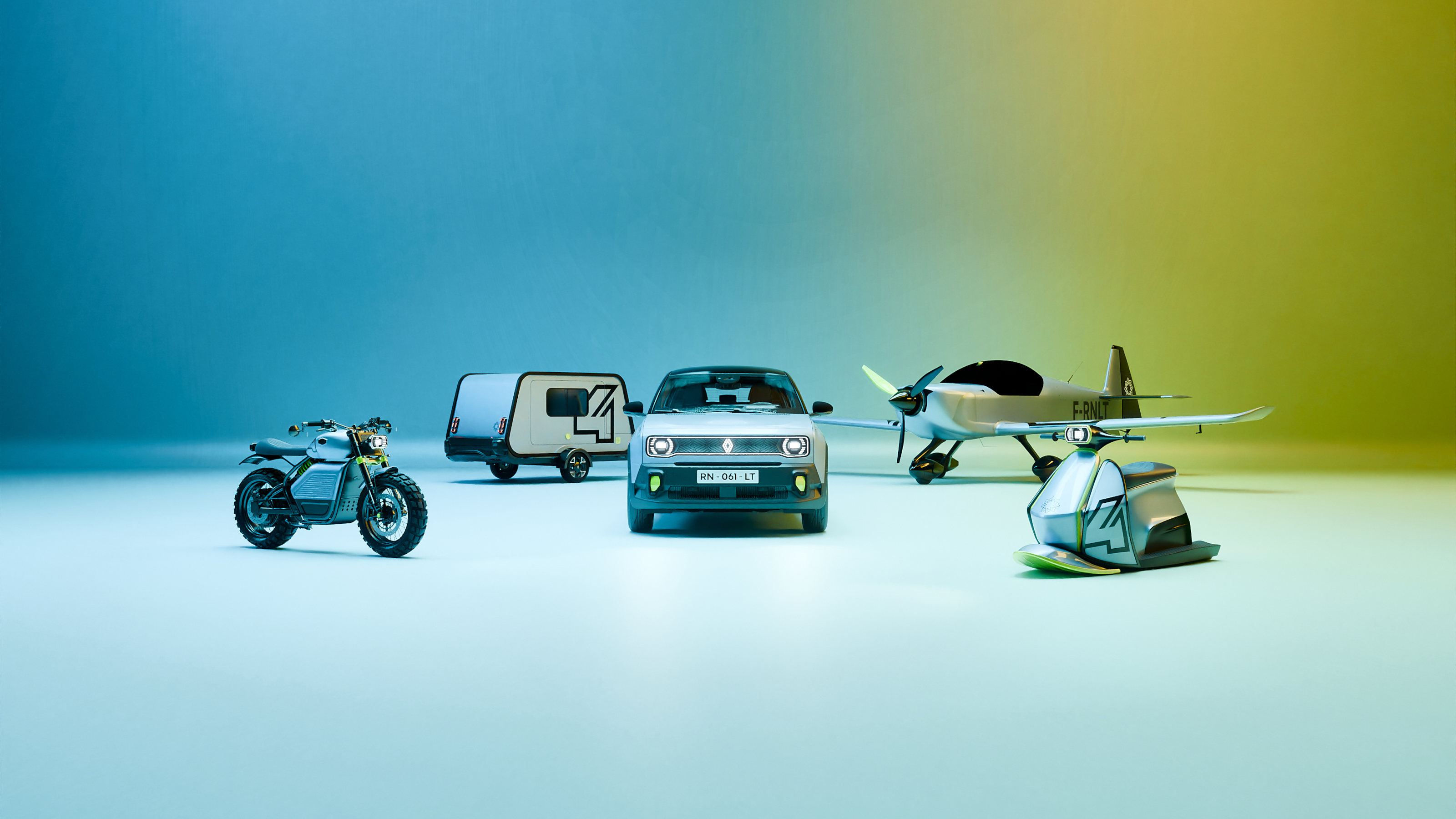 Renault celebrates new R4 EV and electric mobility with TheArsenale and four French start-ups
Renault celebrates new R4 EV and electric mobility with TheArsenale and four French start-upsRenault's '4 Movements' accompanied the R4 E-Tech at the 2024 Paris Motor Show; the clutch of sleek machines will bring innovative electrification to air, sea and water
-
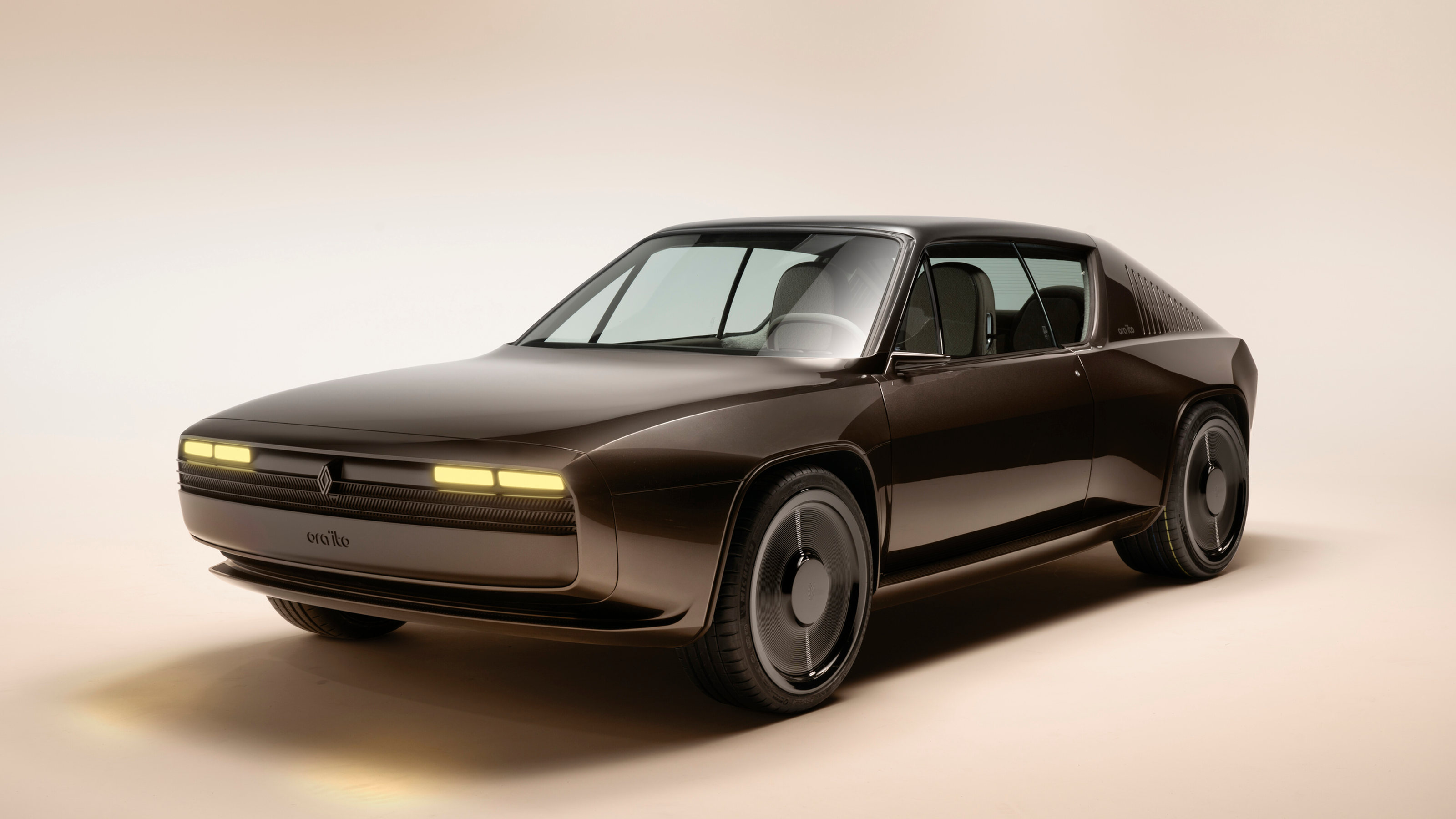 Ora-ïto transforms the Renault 17 into a futuristic yet retro-tinged vision
Ora-ïto transforms the Renault 17 into a futuristic yet retro-tinged visionThe R17 electric restomod x Ora-ïto is the fourth in Renault's series of designer-led reimaginings of iconic models from its past. We think it's the best of the lot
-
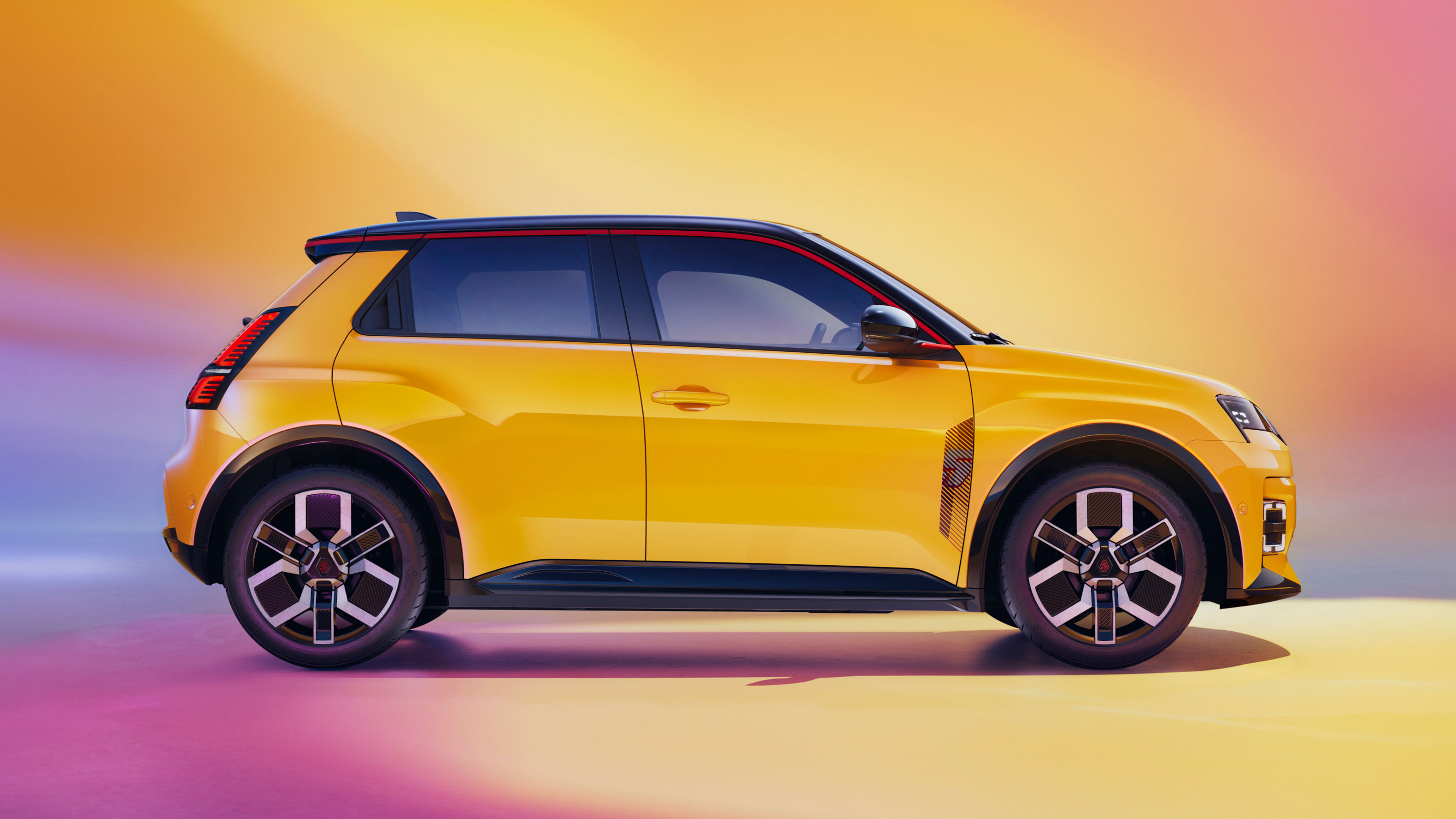 The new Renault 5 E-Tech’s design secrets and designer dreams revealed
The new Renault 5 E-Tech’s design secrets and designer dreams revealedWallpaper* talks to Renault’s Laurens van den Acker and Gilles Vidal about how they shaped the eagerly awaited Renault 5 E-Tech
-
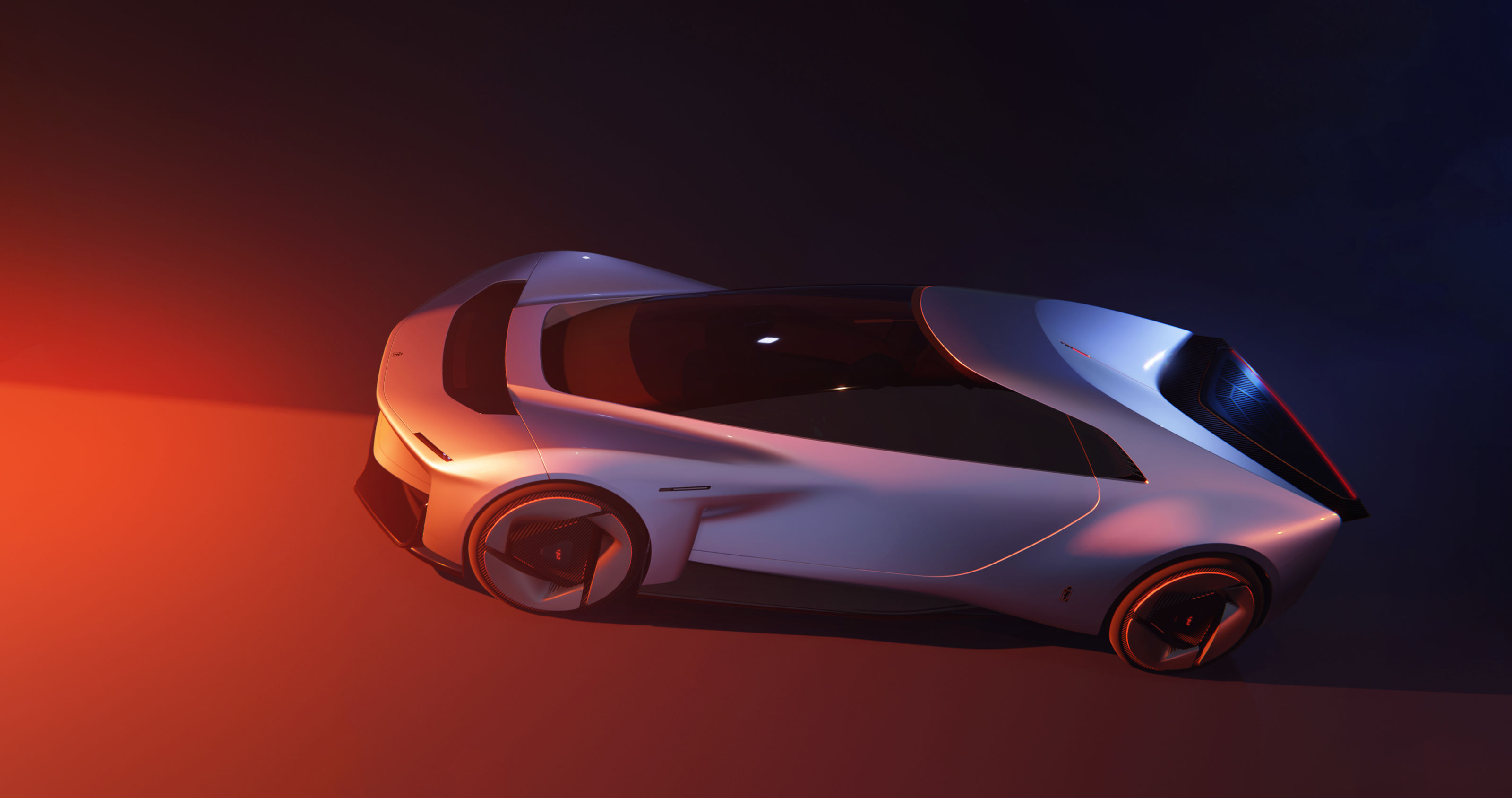 The return of the Geneva Motor Show (to Geneva) as a place for global debuts
The return of the Geneva Motor Show (to Geneva) as a place for global debutsThe Geneva Motor Show is back. After 2020’s pandemic cancellation and an ‘exported’ event in Qatar in 2023, the organisers of GIMS 2024 had their work cut out to stay relevant. Here are our highlights
-
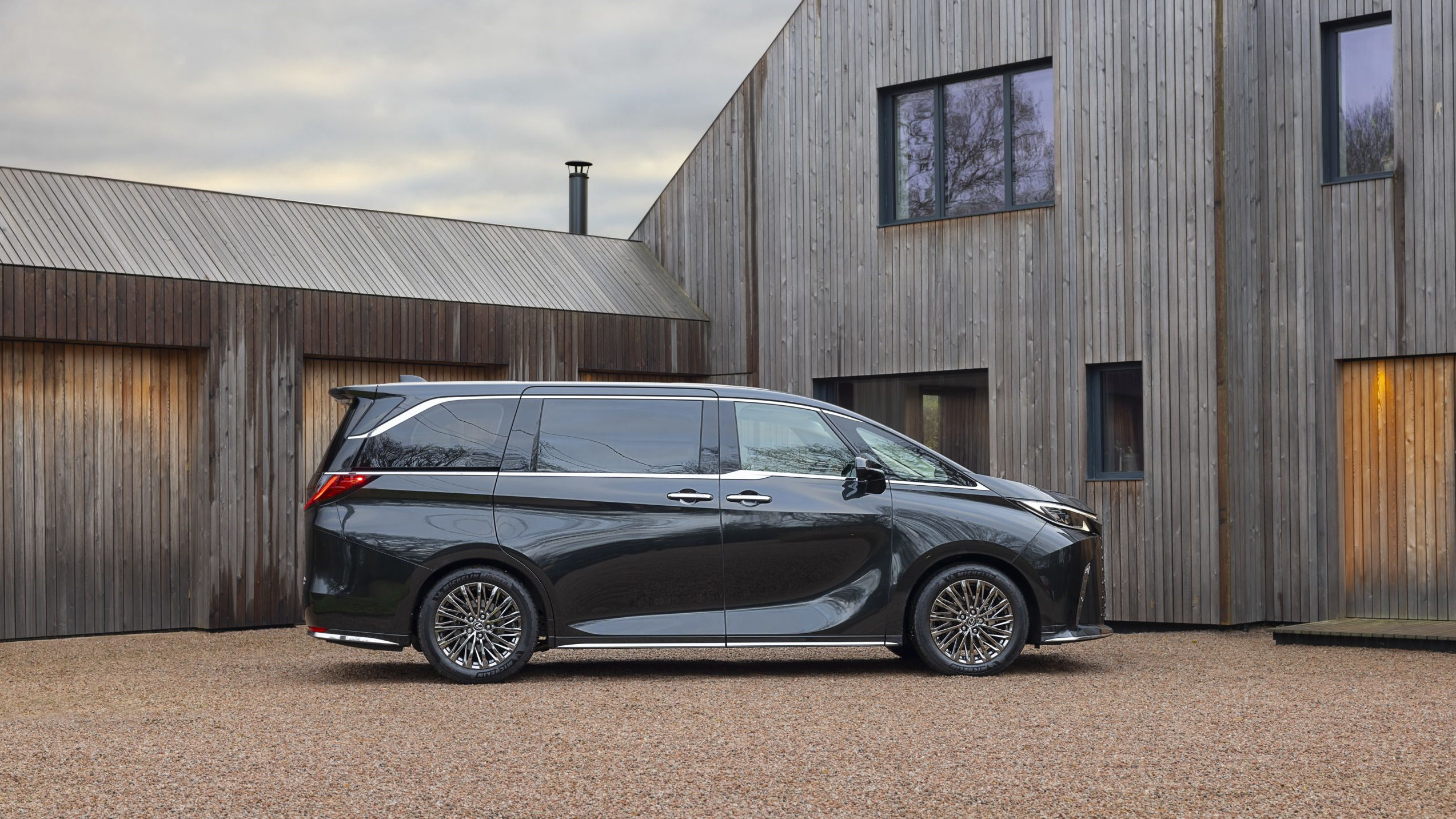 Lexus LM wants you to have the back-seat ride of your life
Lexus LM wants you to have the back-seat ride of your lifeThe back of the Lexus LM has the space, grace and accoutrements to rival a Rolls-Royce. Can this upscale minivan reinvent the luxury car?
-
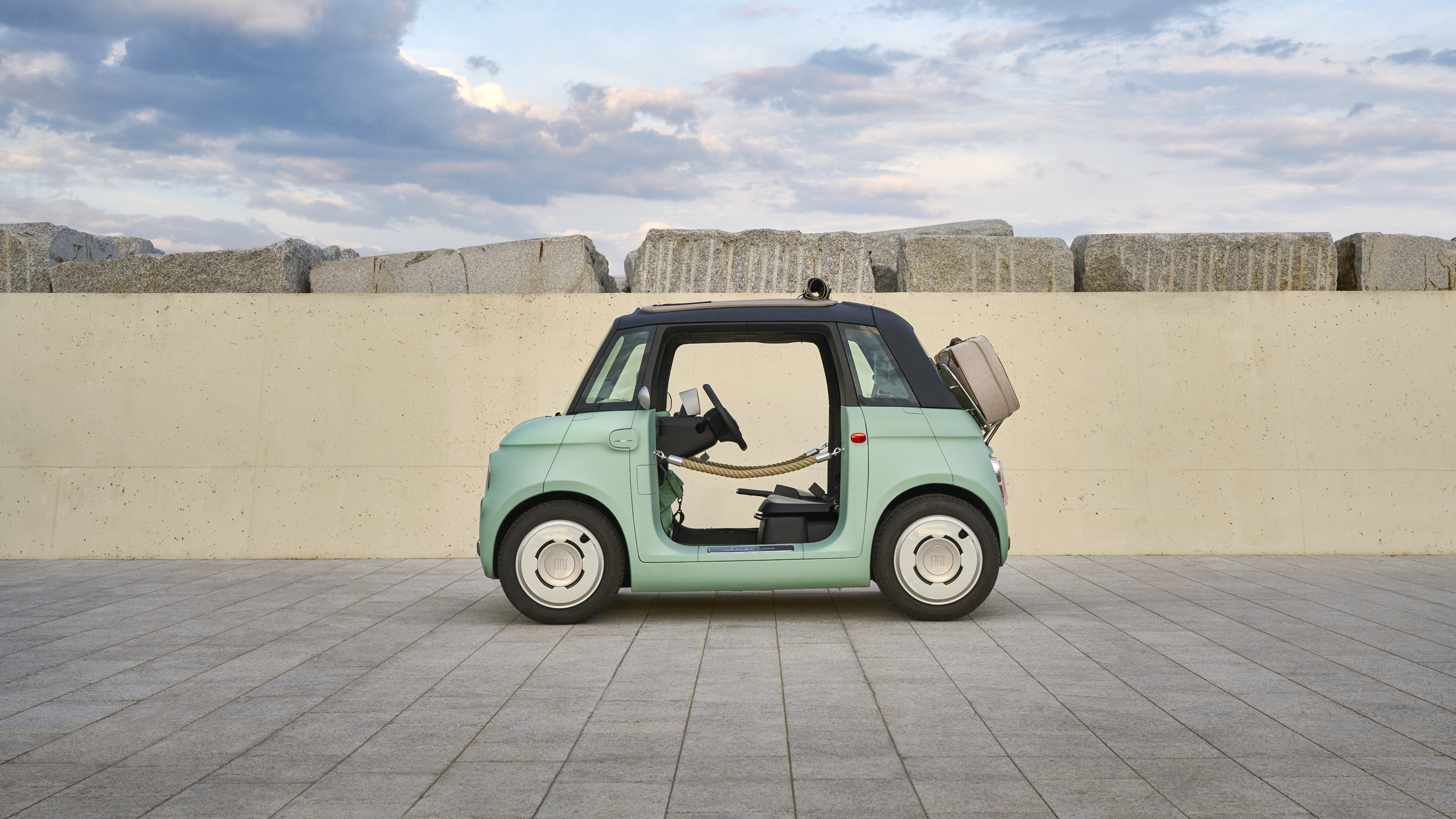 Year in review: top 10 transport design stories of 2023, selected by Wallpaper’s Jonathan Bell
Year in review: top 10 transport design stories of 2023, selected by Wallpaper’s Jonathan BellJonathan Bell’s top 10 transport design stories of 2023 span from electric campers and microcars to flying yachts and classic car recreations
-
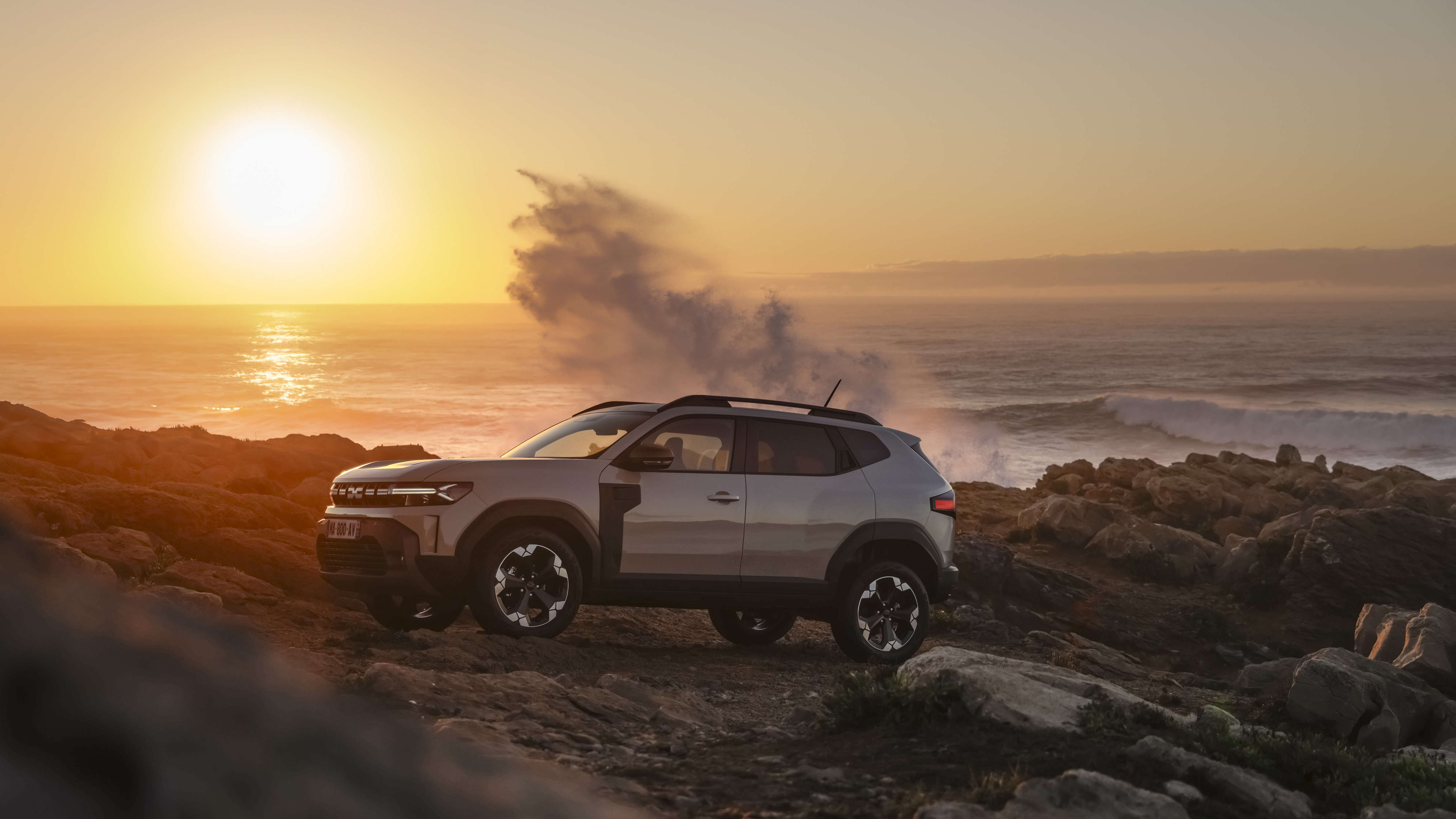 Why the new Dacia Duster SUV is simply ‘enough’
Why the new Dacia Duster SUV is simply ‘enough’The Dacia Duster SUV is proof that in an age of dwindling natural resources, the concept of a product being ‘enough’ – even if customers can afford more – is gaining currency